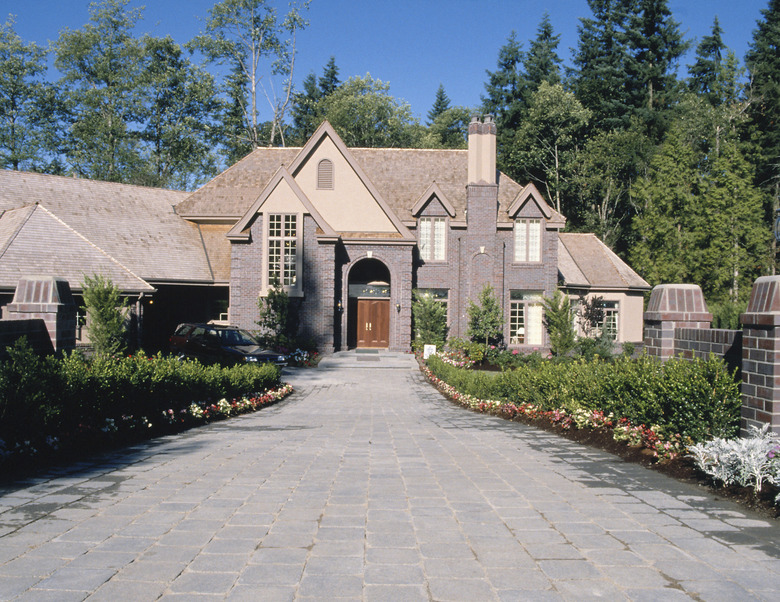The Best Driveway Plants
We may receive a commission on purchases made from links.
A dull driveway can decrease the curb appeal of a home. Banks of blooming flowers, tall grasses or other foliage can frame the slab of concrete and create a welcoming space. The best driveway plants are easy to maintain, don't make a mess in the active space in front of the home and elevate the exterior of your home.
Prep the Driveway Borders
Prep the Driveway Borders
Whether there is a small strip of space on the side of the driveway or the slab of concrete butts up against rocks or grass, you can prep the area to put in plants. Make sure that the area has or can be connected to an automatic irrigation system. Drought-tolerant plants can be placed along driveways that can't connect to a sprinkler or bubbler system, but they will need to be hand-watered on a regular basis.
Go Low or Go High
Go Low or Go High
Before planting along the driveway, consider the space and what you plan to achieve. A group of low-growing plants or ground cover can add a lush aesthetic to the sides of the driveway, while a staked vine, bush or tree can add privacy and a property barrier. Small driveways can be overpowered by a slew of tall trees lining the sides, while a low-growing ground cover may get lost in a wide expanse of concrete.
The surface of the driveway radiates heat and can make it difficult for some plants to thrive. Look for drought-tolerant plants to install along the driveway to ensure they will not wilt and die. To offset the heat and subsequent moisture loss, add a layer of mulch around the base of the plants. The mulch reduces the ability for weeds to take over and increases the soil's moisture retention. If you use an organic mulch, it can also add nutrients to the soil as it breaks down.
Also consider plants that can recover quickly and stand up to careless drivers. Plants along the driveway will more than likely have an unwanted encounter with a car at some point.
Best Plants for Driveways
Best Plants for Driveways
Grasses along a driveway create a soft buffer along the edges. Flowering, grass-like perennials such as monkey grass, also called lily turf (Liriope muscari, USDA zones 5-10), grow about a foot tall and wide with foliage that stays green all year long and purple flower spikes in the summer. Russian sage (Perovskia atriplicifolia, zones 3-9) can grow to about 4 feet tall and fill out into wide bushes. Just a few of these flowering plants can create a privacy screen or clear property border. If it becomes damaged, it won't need to be yanked out and replaced.
A Leyland cypress (x Cuprocyparis leylandii, formerly Cupressus leylandii, zones 6-10) is a fast-growing evergreen tree that can create tall privacy barriers quickly. These trees do need to be managed, particularly on small properties or short driveways. They can grow up to 100 feet tall and can overtake small areas.
Rosemary (Salvia rosmarinus, formerly Rosmarinus officinalis, zones 7-11) and English lavender (Lavandula angustifolia, zones 5-9) serve dual purposes. Both are hardy and create beautiful borders with clusters of small flowers and are relatively easy to maintain. The clippings from both plants can be used in culinary endeavors or as potpourri. They also give off satisfying scents in the wind or when they are brushed, which is a good way to be greeted when pulling into the driveway.
